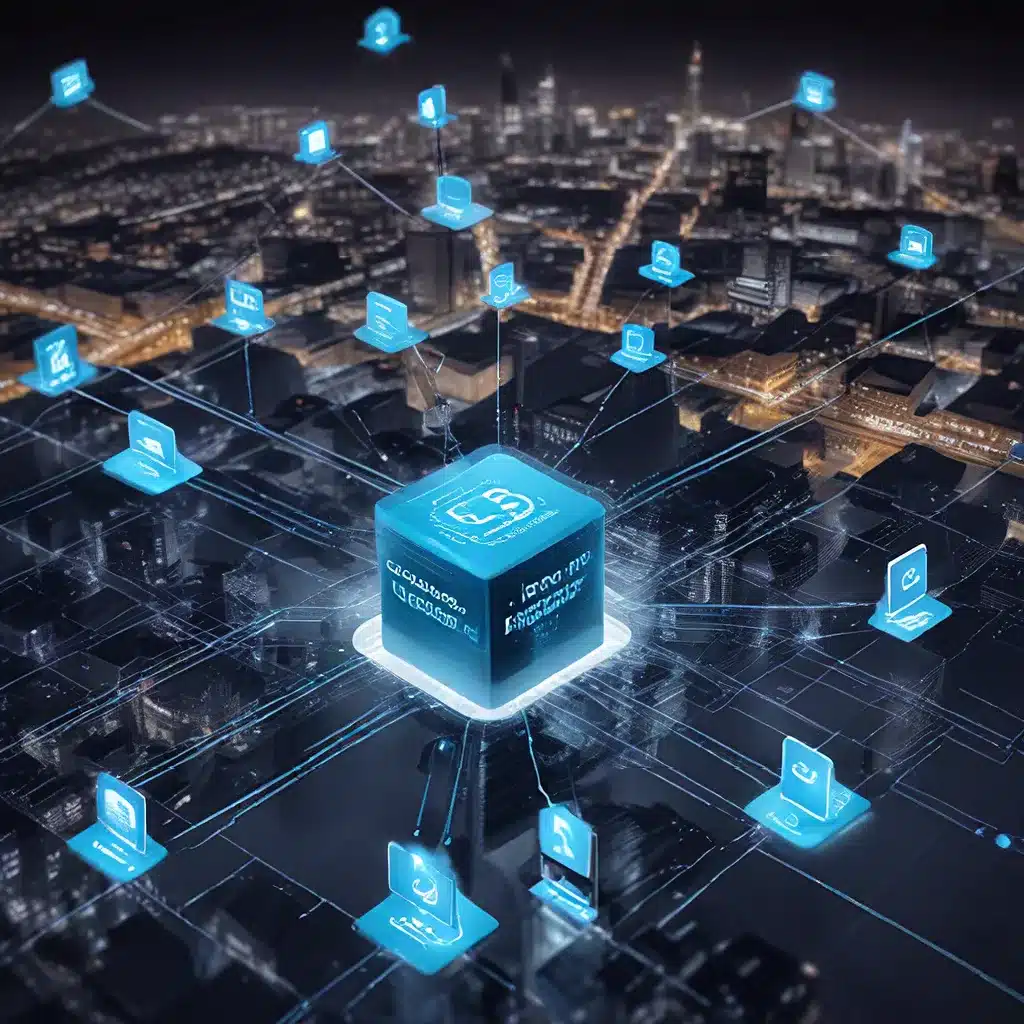
Navigating the Evolving Landscape of Sensor Networks
The world of sensor networks and the Internet of Things (IoT) is constantly evolving, presenting both challenges and opportunities for organizations seeking to leverage these technologies. One of the key advancements in this field is the concept of sensor network virtualization, which has the potential to unlock a new era of flexible and dynamic IoT architectures.
As the number of connected devices continues to grow exponentially, traditional sensor network architectures face limitations in terms of scalability, adaptability, and resource optimization. Sensor network virtualization addresses these challenges by decoupling the physical sensor hardware from the logical representation of the network, enabling a more flexible and agile approach to IoT deployments.
Virtualization technologies have already proven their value in domains such as cloud computing and network function virtualization (NFV), and the same principles can be applied to sensor networks. By virtualizing sensor nodes, organizations can quickly and efficiently deploy, configure, and manage IoT systems, adapting to changing requirements and emerging use cases without the need for extensive hardware modifications.
Unlocking the Potential of Virtualized Sensor Networks
Sensor network virtualization offers a wide range of benefits that can unlock new possibilities for IoT applications and infrastructure. Let’s explore some of the key advantages of this approach:
Improved Scalability and Flexibility
Virtualized sensor networks can easily scale up or down in response to changing data demands or the addition of new sensor nodes. This scalability is achieved by decoupling the physical hardware from the logical representation of the network, allowing for dynamic resource allocation and efficient utilization of available infrastructure.
Furthermore, the flexibility of virtualized sensor networks enables organizations to quickly adapt to evolving requirements, deploying new sensors or updating existing ones without the need for extensive hardware changes. This agility is crucial in the rapidly evolving IoT landscape, where the demands and use cases for sensor data can shift rapidly.
Enhanced Resource Optimization
Sensor network virtualization also introduces opportunities for better resource optimization. By abstracting the physical sensor hardware, organizations can leverage dynamic resource allocation and load balancing techniques to ensure efficient utilization of compute, storage, and network resources.
This optimization can lead to reduced energy consumption, improved battery life for battery-powered sensors, and more cost-effective IoT deployments. Additionally, virtualized sensor networks can enable the dynamic migration of sensor data processing to the most appropriate computing resources, whether on-premise, at the edge, or in the cloud, further enhancing resource efficiency.
Improved Security and Resilience
Sensor network virtualization can also contribute to enhanced security and resilience in IoT systems. By isolating sensor nodes within virtual environments, organizations can implement granular access controls, security policies, and monitoring mechanisms to better protect against cyber threats and unauthorized access.
Moreover, the flexibility of virtualized sensor networks allows for rapid reconfiguration and failover in the event of hardware failures or security incidents, minimizing the impact on the overall IoT system and ensuring greater reliability and business continuity.
Sensor Network Virtualization in Action: Use Cases and Applications
The versatility of sensor network virtualization enables a wide range of applications and use cases across various industries. Let’s explore a few examples:
Smart City and Infrastructure Monitoring
In smart city deployments, sensor network virtualization can enable the dynamic and scalable integration of environmental sensors, traffic monitoring systems, and infrastructure management tools. This flexibility allows cities to adapt to changing needs, optimize resource utilization, and enhance resilience in the face of unexpected events or emergencies.
Industrial Automation and Process Optimization
Industrial IoT environments can leverage virtualized sensor networks to enhance process automation, predictive maintenance, and quality control. By virtualizing sensor nodes across production lines, factories can rapidly reconfigure their monitoring systems, optimize energy consumption, and gain deeper insights into their operations, driving increased efficiency and productivity.
Healthcare and Telemedicine
In the healthcare sector, virtualized sensor networks can enable remote patient monitoring, telehealth services, and intelligent care coordination. Sensor nodes can be dynamically deployed and configured to track vital signs, medication adherence, and activity levels, providing personalized care and improved patient outcomes, while ensuring data privacy and security.
Agriculture and Environmental Monitoring
Precision agriculture and environmental monitoring are other areas where sensor network virtualization can make a significant impact. Farmers and environmental agencies can quickly adapt their sensor deployments to changing weather patterns, pest infestations, or ecosystem conditions, optimizing resource utilization, crop yields, and environmental sustainability.
Embracing the Future of Sensor Networks
As the world continues to become increasingly connected, the role of sensor networks and IoT will only grow more crucial. Sensor network virtualization presents a promising path forward, offering organizations the flexibility, scalability, and resilience needed to leverage these technologies and unlock new possibilities in a wide range of industries.
By embracing the principles of virtualization, IoT professionals and system architects can design more adaptable, efficient, and secure sensor network architectures, positioning their organizations for success in the rapidly evolving IoT landscape.
To learn more about the latest advancements in sensor networks and IoT, visit the Sensor Networks website, where you’ll find a wealth of resources, insights, and expert analysis on these transformative technologies.